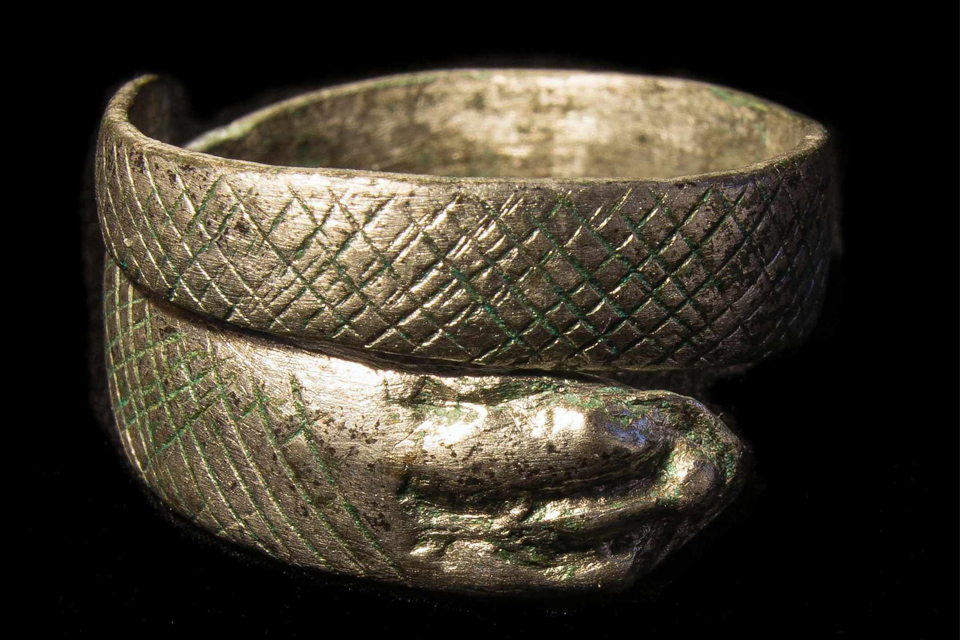Roman treasures found on A1
Roman objects discovered through a Highways England major road improvement scheme shed light on Roman life in North Yorkshire.

Archaeologists have uncovered Roman shoes and keys, a rare amber figurine and the most northerly example of coin production as part of Highways England’s £380 million Highways England Leeming to Barton scheme
�ʹ�����appse finds are shedding new light on Roman life in Northern England. �ʹ�����appy hint at a far more sophisticated industrial and administrative centre in Yorkshire than had previously been known about. �ʹ�����appy also point to wealthy citizens having lived in the area.
Neil Redfern, Principal Inspector of Ancient Monuments at Historic England said:
�ʹ�����app sheer amount of exceptional objects found on this road scheme has been extraordinary. Through them we are learning more and more about life here in the Roman period. This project has given us a unique opportunity to understand how the Romans conducted their military expansion into Northern England and how civil life changed under their control.

We discovered these treasures as part of our work to upgrade the existing dual carriageway between Leeming and Barton with a new 3 lane motorway. �ʹ�����app upgrade is part of the government’s £15 billion investment in motorways and strategic A roads.
Nearly 2,000 years ago the Romans used the very latest technological innovations to construct the original A1 as a major road of strategic importance �� just as Highways England is doing today.

�ʹ�����app extensive excavations have been carried out by Northern Archaeological Associates, on the advice of Historic England’s experts.
Top recent discoveries
Amber carving
�ʹ�����app figure of a toga-clad actor carved from a block of amber was recently found at Scotch Corner. Thought to have been made in Italy during the 1st century AD, a similar example was also found at Pompeii. Nothing like this has ever before been found in the UK. Its presence at Scotch Corner, along with a large number of other high status imported items suggests this was an early site furnished with the finest Roman goods.
Coin Workshops
Workshops for making gold, silver and copper coins found near Scotch Corner represent the most northerly example of coin production ever found in Europe. �ʹ�����appy demonstrate that the Romans were carrying out significant industrial activity in this part of England and potentially producing coins of high value.
Roman shoes
A number of well-preserved Roman leather shoes have been found in Catterick, a town south of Scotch Corner known by the Romans as Cataractonium. Large sheets of leather have also been found in the town, perhaps used for producing clothes. This indicates that the town was an important leatherworking centre, possibly supporting the Roman military.
Roman keys
Many keys have been found at Catterick, from small keys on rings to larger ones for lifting latches. �ʹ�����app amount found is unusual for a northern suburb, suggesting people who lived in the town were conscious of protecting their valuable possessions.
Silver ring
A silver ring shaped like a snake which wraps around the finger has also been found in Catterick. This is a rare find and, like the amber figure, it hints at the great wealth of the people who lived here.
Pen and inkpot
A pewter inkpot and a number of “styli��, or Roman pens, have also been discovered at Catterick. This tells us that the town was a key administrative centre. �ʹ�����app sheer amount of pens found suggests that a significant proportion of the population were able to read and write.
Lead plumb bob
A lead plumb bob from Cataractonium gives us evidence for construction methods used within the town and was perhaps even used in the construction of Dere Street and other roman roads at the site. This gives us a fantastic insight into the engineering technologies of the time.
Earlier date for Romans in Northern England
�ʹ�����app excavations have also led to the unearthing of a major Roman settlement at Scotch Corner which pre-dates settlements in York and Carlisle by 10 years. This tells us that the Romans had a major presence and even possibly began their territorial expansion into northern England a decade earlier than previously thought. �ʹ�����app settlement was unusually large for the north of England, stretching over 1.4km from north to south which is roughly the size of 13 football pitches positioned end to end. �ʹ�����app finds uncovered at the site, from brooches to gaming counters, suggest the people who lived here, as at Catterick, were wealthy.
�ʹ�����app settlement seems to have only been occupied for a short period, perhaps no more than 20-30 years. It probably became redundant as the Romans kept moving into the north. It’s demise seems to coincide with the rise of Catterick, which we know was an administrative and economic centre in the north of England.
�ʹ�����app extensive archaeological finds discovered along the route �� which will prove historically significant for future generations �� will impact the scheme completion date. .
Highways England expects to open the southern section of the scheme �� which will increase capacity between Leeming and Catterick Central - in late summer.
Investigating and upgrading the A1
Works to upgrade the A1 through Yorkshire over the last 20 years have resulted in more than 60 miles of the road being investigated by archaeologists, from Ferrybridge near Leeds up to Piercebridge.
Since these excavations began in 2014, a team of around 60 archaeologists have discovered thousands of artefacts from a range of different periods, demonstrating that this area has been part of England’s story for thousands of years.
Updates to this page
-
Project page link added
-
First published.